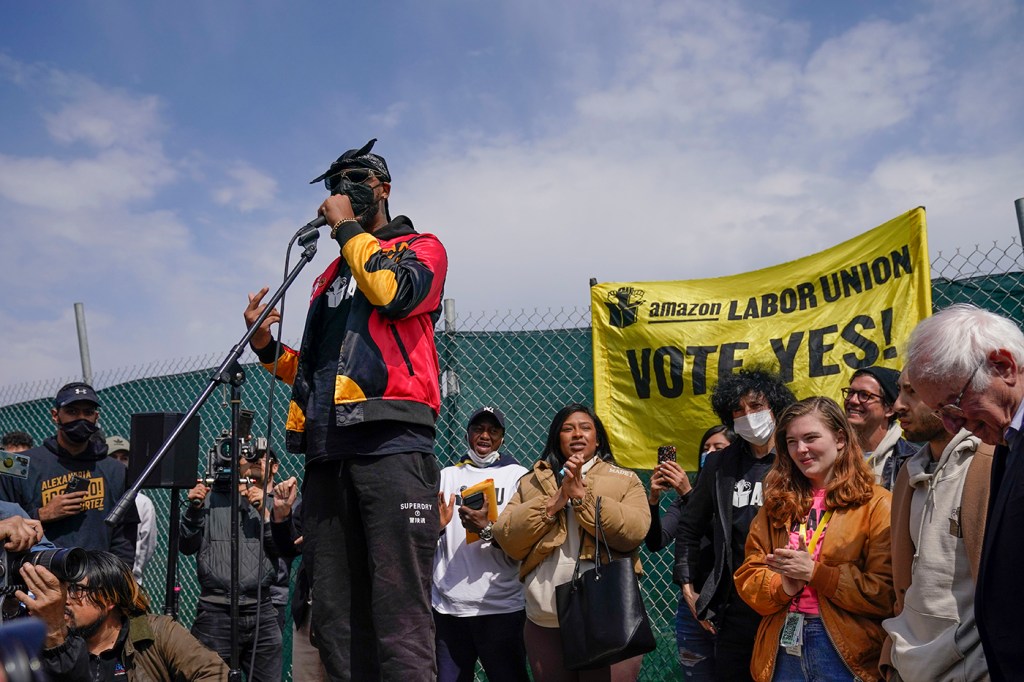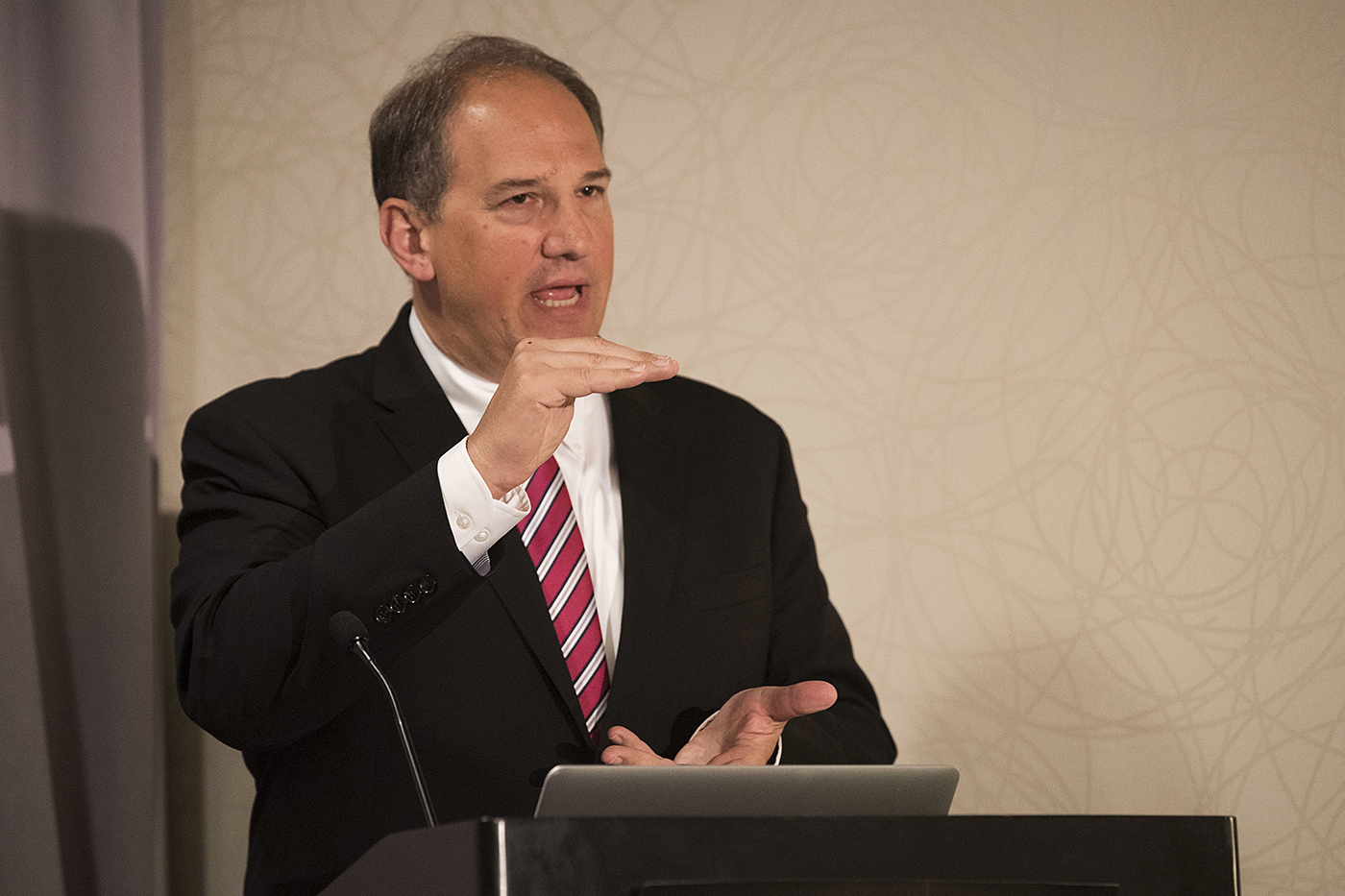Is there a new labor movement afoot in the US? Seth Harris, former top advisor to Biden, weighs in


Amazon workers in Staten Island, New York, voted in March to form the mega-retailer’s first union, buoying organizing efforts at other Amazon plants across the country and prompting many observers to speculate that a new labor movement might be taking hold.
The election victory at Amazon’s JFK8 warehouse has coincided with organizing efforts at numerous Starbucks stores, which are focused largely on health and safety concerns born out of the COVID-19 pandemic.
News@Northeastern spoke with incoming Northeastern Distinguished Professor of the Practice Seth Harris in the College of Professional Studies, about developments in the labor movement. He recently served as President Joe Biden’s top labor advisor, and as acting labor secretary under former President Barack Obama. Harris will also be an affiliated faculty member and senior fellow at Northeastern’s Burnes Center for Social Change. His comments have been edited for clarity and brevity.
With union victories at major U.S. companies, such as Starbucks and Amazon, making headlines, are we seeing a resurgence in the labor movement?
There are new things happening in the labor movement, but the union movement itself is still very much using a model that’s been around for decades. The principal model is majority exclusive unionism, meaning the union wins an election, or gets recognized by the employer, and the union represents everyone in the bargaining unit, usually a workplace, or a subset of the workplace with particular kinds of workers.
The success we saw at the Amazon warehouse in Staten Island for the independent Amazon Labor Union and the success of Workers United’s organizing at Starbucks is noteworthy, but not because they’re doing something entirely new. They represent everyone in the workplace and won an election in competition with the employer.
What’s new is they’re winning. And that is the news out of both Amazon and Starbucks, but also at other high-profile retail outlets. There’s an REI store in SoHo in New York City where the workers organized. The first Apple retail store was organized by the International Association of Machinists.
So, we’re beginning to see union victories in organizing drives in industries where success has been a lot less common in the past—retail being one. We’re also beginning to see some victories in the video gaming business and in the technology industry. The New York Times technology workers organized into the NewsGuild [of New York], for example. That is the top headline of what’s changed for the labor movement.
There is also—parallel to the traditional labor movement—a set of organizing that’s going on that is not bringing workers into traditional labor unions. In some cases that organizing is being done by unions. For example, the Communications Workers of America (a traditional union) organized a group of workers at Alphabet [Inc.], Google’s parent company. They didn’t seek an election or recognition from the employer, but they are advocating on behalf of those workers. That is typically known as a members-only union.
We see that kind of model in a number of places, including in the public sector in states that don’t have public employee collective bargaining, or that put other limitations on public employee unionization. But there’s also a large movement in the country of so-called “worker centers” that are often focused on serving immigrant workers—but not always; and they take a different approach. They don’t organize unions. You don’t have that majority exclusive representation; you have advocacy; you have legal actions; you have other forms of support for workers. … The worker center movement has doubled over the last decade or so, which is a really meaningful development.
But I would also say that that development has been largely funded by philanthropies—not by workers. The union movement is funded by members: Members pay dues, so it’s a self-sustaining model as long as you can keep organizing and keep increasing your membership.
So, there’s a lot of interesting things going on in labor right now and part of what I am hoping to do at Northeastern is to shine a light on those developments, help to analyze and interpret those developments and maybe even help those developments advance.
You mentioned that the labor movement is starting to penetrate into these new industries—retail, video gaming, etc. What barriers have stood in the way of labor being able to get a foothold in these sectors?
So let’s start with: It’s extraordinarily difficult to organize a union in America. The law is stacked against workers. Employers have essentially free reign not only to campaign aggressively against unions, but to engage in tactics that frankly you would find in a banana republic country’s elections. You can literally lock a worker in a room with a supervisor and the supervisor can berate them for an unlimited period of time about why the union is a horrible idea.
In any industry in America, it is very hard to organize unless the union can force the employer to give them a neutrality agreement, which would allow for workers to support the union by signing a card rather than having an election. Or, if the employer just agrees to stay out and let the union run its campaign.
Now, some industries have unions going way back. The auto industry was organized in the 1930s; the building and construction trades have had guilds and unions going back many decades even before that. So, there’s a long history of unions in certain industries.
In newer industries, industries where you have a lot of transient workers, however, it’s much more difficult to organize a union—and there are a number of reasons for that. Sometimes it’s just because workers there have never seen a union. Or they don’t feel they want to be in conflict with their employers—maybe they feel they can be more successful on their own.
Younger workers tend to believe, ‘Well, I’m not going to hang around that long, maybe I’ll move on, so I don’t need a union.’ That’s been one of the challenges in Silicon Valley and in the video game industry is that you tend to have a lot of younger workers who are not all that wedded to their workplace and plan to move on. They would rather exit than exercise their voice in their workplace.
But we’re seeing a change. First of all, younger workers are much more supportive of the labor movement than their older colleagues; they’re more engaged in community-focused action; they’re more likely to be on the left ideologically and therefore more open to the message of workers coming together and building power through community.
So, I think we are seeing a little bit of a generational change; the question is will the generational change be enough to overcome the institutional advantage that employers have—their ability to beat back union organizing.
Have workers’ demands changed over the years, and more recently as a result of the COVID-19 pandemic?
I think that workers were angry going into the pandemic, and they came out of the pandemic furious. That radicalized a lot of workplaces, a lot of workers and a lot of unions all across the United States. We’ve seen it among nurses and teachers; we’ve seen it among Starbucks workers; I think it played a very important role in a number of strikes we saw across the country.
For example at John Deere—the maker of large farm equipment—the union leadership negotiated a deal with the company and the members rejected it because they felt they weren’t getting enough compensation for the concessions they had made before the pandemic, and for the way that they worked hard and put themselves at risk during the pandemic. We saw the same kind of dynamic at Kaiser Permanente as well.
I think a lot of the organizing that’s going on right now was a realization by workers that employers’ job in capitalism is to make profit. It’s not to protect their workers. A lot of employers behaved responsibly during the pandemic, but not all did. And even those that did, the bottom line was the bottom line.
And many workers—not all workers—realized that they needed to come together to protect themselves. So I think it’s not merely that they’re asking for different things—more safety and health; better safety and health and the opportunity to participate in safety and health decision-making in the workplace—but they realized it’s all up to them to protect themselves.
For media inquiries, please contact media@northeastern.edu






